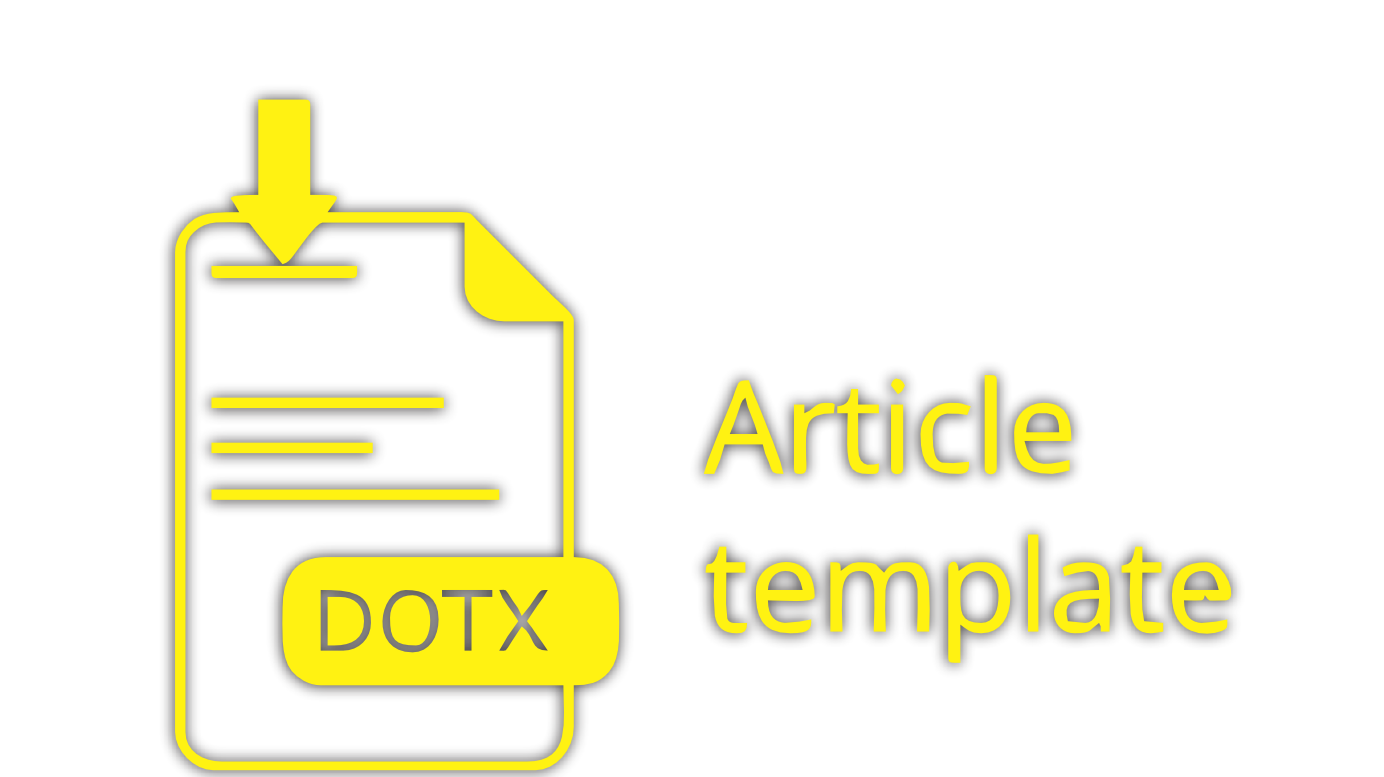Diversity of Hymenoptera in Indonesian Rice Agroecosystems: A Systematic Review of Species Composition and Ecological Roles
DOI:
https://doi.org/10.25077/aijent.2.2.122-132.2024Keywords:
insect pest, Agriculture Ecosystem, hymenopteraAbstract
Hymenoptera are vital for maintaining ecological balance in rice agroecosystems. These insects provide essential ecosystem services, particularly in biological pest control, reducing the reliance on chemical pesticides. Despite their importance, the impact of different agricultural practices on Hymenoptera diversity and their ecological roles in Indonesian rice fields remains underexplored. This systematic review aims to assess the diversity and ecological functions of Hymenoptera in Indonesian rice agroecosystems, evaluate their contributions to natural pest suppression, and examine how various management practices, including organic farming and Integrated Pest Management (IPM), affect Hymenoptera populations. A comprehensive search of peer-reviewed studies from Scopus, Web of Science, and Google Scholar was conducted. Inclusion criteria focused on studies reporting Hymenoptera species diversity, ecological roles, and the effects of different rice farming practices. Data on species composition, pest suppression rates, and management practices were synthesized and analyzed using statistical methods, including regression and ANOVA.The findings reveal significant variation in Hymenoptera diversity across regions, with organic and IPM practices supporting higher species richness than conventional methods. A strong positive correlation was found between Hymenoptera diversity and pest suppression rates, particularly during the reproductive stage of rice growth. Parasitoids and predators played dominant roles in controlling key rice pests.Conserving Hymenoptera diversity through sustainable farming practices is crucial for reducing chemical inputs, improving pest control, and enhancing the resilience of rice agroecosystems. Future agricultural strategies should integrate biodiversity-friendly practices to ensure long-term sustainability in rice production.
Downloads
References
Acosta, L., Jahnke, S., & Pires, P. (2017). Insect diversity in organic rice fields under two management systems of levees vegetation. Brazilian Journal of Biology, 77(4), 731-744. https://doi.org/10.1590/1519-6984.19615 DOI: https://doi.org/10.1590/1519-6984.19615
Alam, M., Haque, M., Islam, M., Hossain, M., Hasan, S., Hasan, S., … & Hossain, M. (2016). Comparative study of integrated pest management and farmers practices on sustainable environment in the rice ecosystem. International Journal of Zoology, 2016, 1-12. https://doi.org/10.1155/2016/7286040 DOI: https://doi.org/10.1155/2016/7286040
Ali, M., Biswas, M., Clemente-Orta, G., Kabir, M., Datta, J., Haque, S., … & Howlader, M. (2022). landscape diversity influences the arthropod species diversity in the rice field. Frontiers in environmental Science, 10. https://doi.org/10.3389/fenvs.2022.740287
Anwar, R. (2024). species investigation of rice stem borers and its parasitoids on fallowing rice fields at karawang, indonesia. Agrivita Journal of Agricultural Science, 46(1), 38. https://doi.org/10.17503/agrivita.v46i1.4036
Audi, A. and Biliyaminu, A. (2019). Understanding insect parasitoids life history behaviour for optimal utilization in biological control of tropical injurious pest - a review. Bayero Journal of Pure and Applied Sciences, 11(2), 39. https://doi.org/10.4314/bajopas.v11i2.6
Balzan, M., Bocci, G., & Moonen, A. (2016). Utilisation of plant functional diversity in wildflower strips for the delivery of multiple agroecosystem services. Entomologia Experimentalis Et Applicata, 158(3), 304-319. https://doi.org/10.1111/eea.12403 DOI: https://doi.org/10.1111/eea.12403
Banks, J., Hannon, L., Dietsch, T., & Chandler, M. (2014). Effects of seasonality and farm proximity to forest on hymenoptera in tarrazú coffee farms. International Journal of Biodiversity Science Ecosystems Services & Management, 10(2), 128-132. https://doi.org/10.1080/21513732.2014.905494 DOI: https://doi.org/10.1080/21513732.2014.905494
Christopher, J. (2024). adoption of sustainable farming practices in the united states: a study on farmer behavior. International Journal of Agriculture, 9(1), 35-46. https://doi.org/10.47604/ija.2533
Clough, Y., Abrahamczyk, S., Adams, M., Anshary, A., Ariyanti, N., Betz, L., … & Tscharntke, T. (2010). Biodiversity patterns and trophic interactions in human-dominated tropical landscapes in sulawesi (indonesia): plants, arthropods and vertebrates., 15-71. https://doi.org/10.1007/978-3-642-00493-3_2 DOI: https://doi.org/10.1007/978-3-642-00493-3_2
Dhakal, A. and Poudel, S. (2020). integrated pest management (ipm) and its application in rice – a review. Reviews in Food and Agriculture, 1(2), 54-58. https://doi.org/10.26480/rfna.02.2020.54.58
Dominik, C., Seppelt, R., Horgan, F., Settele, J., & Václavík, T. (2018). Landscape composition, configuration, and trophic interactions shape arthropod communities in rice agroecosystems. Journal of Applied Ecology, 55(5), 2461-2472. https://doi.org/10.1111/1365-2664.13226
Elsheikh, M., Hegazy, F., & Hendawy, A. (2018). Impact of biocide, insecticides, compost and mineral fertilizers treatments on the abundance of parasitoid and predator insects in rice fields. Journal of Plant Protection and Pathology, 9(3), 225-230. https://doi.org/10.21608/jppp.2018.41394
Furlong, M. and Zalucki, M. (2010). Exploiting predators for pest management: the need for sound ecological assessment. Entomologia Experimentalis Et Applicata, 135(3), 225-236. https://doi.org/10.1111/j.1570-7458.2010.00988.x DOI: https://doi.org/10.1111/j.1570-7458.2010.00988.x
Gagić, V., Marcora, A., & Howie, L. (2019). Additive and interactive effects of pollination and biological pest control on crop yield. Journal of Applied Ecology, 56(11), 2528-2535. https://doi.org/10.1111/1365-2664.13482
Gonthier, D., Kuesel, R., & Perfecto, I. (2015). pest suppression by ant biodiversity is modified by pest biodiversity.. https://doi.org/10.7287/peerj.preprints.1509v1 DOI: https://doi.org/10.7287/peerj.preprints.1509v1
Gurr, G., Liu, J., Read, D., Catindig, J., Cheng, J., Lan, L., … & Heong, K. (2010). Parasitoids of asian rice planthopper (hemiptera: delphacidae) pests and prospects for enhancing biological control by ecological engineering. Annals of Applied Biology, 158(2), 149-176. https://doi.org/10.1111/j.1744-7348.2010.00455.x DOI: https://doi.org/10.1111/j.1744-7348.2010.00455.x
Hajjar, M., Ahmed, N., Alhudaib, K., & Ullah, H. (2023). Integrated insect pest management techniques for rice. sustainability, 15(5), 4499. https://doi.org/10.3390/su15054499
He, C. (2024). Large-scale genome analyses provide insights into hymenoptera evolution.. https://doi.org/10.1101/2024.07.01.601370
Idris, G. (2023). diversity of the order hymenoptera in rice plantation in manembo-nembo district as an ecological indicator. indonesian. biodiver. j., 4(3), 21-31. https://doi.org/10.53682/ibj.v4i3.7945
Ikhsan, Z. (2022). Diversity of hymenoptera parasitoid species in rice cultivation and their correlation with environmental factors in tidal swamp land. Biodiversitas Journal of Biological Diversity, 23(5). https://doi.org/10.13057/biodiv/d230503
Ikhsan, Z. and Hamid, H. (2020). The the diversity and abundance of hymenoptera insects on tidal swamp rice field in indragiri hilir district, indonesia. Biodiversitas Journal of Biological Diversity, 21(3). https://doi.org/10.13057/biodiv/d210323
Ikhsan, Z. and Oktavia, A. (2021). Diversity and composition of hymenoptera around tidal swamp rice in indragiri hilir district, indonesia. Andalasian International Journal of Agriculture and Natural Sciences (Aijans), 2(02), 13-20. https://doi.org/10.25077/aijans.v2.i02.13-20.2021
Ikhsan, Z., Hidrayani, a., Yaherwandi, b., Hamid, H., & Satria, R. (2020). Species diversity and abundance ofants (hymenoptera: formicidae)on tidal swamp rice in indragiri hilir, indonesia. International Journal of Advanced Research, 8(12), 658-664. https://doi.org/10.21474/ijar01/12194
Jauharlina, J., Hasnah, H., & Taufik, M. (2019). Diversity and community structure of arthropods on rice ecosystem. Agrivita Journal of Agricultural Science, 41(2). https://doi.org/10.17503/agrivita.v41i2.2160
Jeavons, E., Chevrie, O., Lann, C., Renault, D., Floch, M., Bourgeois, T., … & Baaren, J. (2021). Exploitative competition for floral resources reduces sugar intake but differently impacts the foraging behaviour of two non‐bee flower visitors. Oikos, 2022(1). https://doi.org/10.1111/oik.08576
Kalpana, K. (2024). the role of pollinators in enhancing biodiversity and pollination mechanisms: a review. Uttar Pradesh Journal of Zoology, 45(13), 226-241. https://doi.org/10.56557/upjoz/2024/v45i134150
Letourneau, D. and Bothwell, S. (2008). Comparison of organic and conventional farms: challenging ecologists to make biodiversity functional. Frontiers in Ecology and the Environment, 6(8), 430-438. https://doi.org/10.1890/070081 DOI: https://doi.org/10.1890/070081
Muturi, E., Mwangangi, J., Beier, J., Blackshear, M., Wauna, J., Sang, R., … & Mukabana, W. (2013). Ecology and behavior of anopheles arabiensis in relation to agricultural practices in central kenya. Journal of the American Mosquito Control Association, 29(3), 222-230. https://doi.org/10.2987/13-6328r.1 DOI: https://doi.org/10.2987/13-6328R.1
Naranjo, S., Ellsworth, P., & Frisvold, G. (2015). Economic value of biological control in integrated pest management of managed plant systems. Annual Review of Entomology, 60(1), 621-645. https://doi.org/10.1146/annurev-ento-010814-021005 DOI: https://doi.org/10.1146/annurev-ento-010814-021005
Nurhasan, N. and Susilawati, H. (2022). the dynamic of pests and plant diseases during three consecutive rice growing seasons. Iop Conference Series Earth and Environmental Science, 1039(1), 012030. https://doi.org/10.1088/1755-1315/1039/1/012030
Pearsons, K. and Tooker, J. (2017). in-field habitat management to optimize pest control of novel soil communities in agroecosystems. Insects, 8(3), 82. https://doi.org/10.3390/insects8030082 DOI: https://doi.org/10.3390/insects8030082
Pustika, A. (2023). Insect diversity of some hybrid rice genotypes in sleman-yogyakarta irrigated agroecosystem. Iop Conference Series Earth and Environmental Science, 1287(1), 012023. https://doi.org/10.1088/1755-1315/1287/1/012023
Rahmawasiah, R., Abadi, A., Mudjiono, G., & Rizali, A. (2022). the effect of integrated pest management on scirpophaga innotata population and natural enemies on rice field in south sulawesi, indonesia. Biodiversitas Journal of Biological Diversity, 23(9). https://doi.org/10.13057/biodiv/d230917
Raut, A. (2023). Impact of pesticides on diversity and abundance of predatory arthropods in rice ecosystem. Applied and Environmental Soil Science, 2023, 1-10. https://doi.org/10.1155/2023/8891070
Ross, S. (2023). Limited theoretical and empirical evidence that response diversity determines the resilience of ecosystems to environmental change. ecological Research, 39(2), 115-130. https://doi.org/10.1111/1440-1703.12434
Rusch, A., Chaplin‐Kramer, R., Gardiner, M., Hawro, V., Holland, J., Landis, D., … & Bommarco, R. (2016). Agricultural landscape simplification reduces natural pest control: a quantitative synthesis. Agriculture Ecosystems & Environment, 221, 198-204. https://doi.org/10.1016/j.agee.2016.01.039 DOI: https://doi.org/10.1016/j.agee.2016.01.039
Sann, C., Wemheuer, F., Beaurepaire, A., Daniel, R., Erler, S., & Vidal, S. (2018). Preliminary investigation of species diversity of rice hopper parasitoids in southeast asia. Insects, 9(1), 19. https://doi.org/10.3390/insects9010019 DOI: https://doi.org/10.3390/insects9010019
Siahaan, D., Berliani, K., Pangaribuan, R., Agustin, D., Mutiara, F., & Tarigan, T. (2022). diversity of hymenoptera in the forest area with special purpose (khdtk) aek nauli, north sumatra. Iop Conference Series Earth and Environmental Science, 1115(1), 012018. https://doi.org/10.1088/1755-1315/1115/1/012018
Sulistyawati, Y., Trisyono, Y., & Witjaksono, W. (2022). Brown planthopper egg parasitization in rice fields with different growth ages. Jurnal Perlindungan Tanaman Indonesia, 26(1), 86. https://doi.org/10.22146/jpti.67448
Syahidah, T., Rizali, A., Prasetyo, L., & Buchori, D. (2020). Short communication: landscape composition alters parasitoid wasps but not their host diversity in tropical agricultural landscapes. Biodiversitas Journal of Biological diversity, 21(4). https://doi.org/10.13057/biodiv/d210452
Tabuchi, K., Takahashi, A., Uesugi, R., Okudera, S., & Yoshimura, H. (2021). Extrapolating potential crop damage by insect pests based on land use data: examining inter-regional generality in agricultural landscapes.. https://doi.org/10.21203/rs.3.rs-914458/v2
Thapa, R. (2022). a study on biological control, cultural practices, and chemical control methods in nursery pest and disease management. jsfs. https://doi.org/10.53555/sfs.v8i3.2398
Thei, R., Abadi, A., Mudjiono, G., & Suprayogo, D. (2020). The dynamics of arthropod diversity and abundance in rice field ecosystem in central lombok, indonesia. Biodiversitas Journal of Biological Diversity, 21(12). https://doi.org/10.13057/biodiv/d211249
Thorburn, C. (2015). The rise and demise of integrated pest management in rice in indonesia. Insects, 6(2), 381-408. https://doi.org/10.3390/insects6020381 DOI: https://doi.org/10.3390/insects6020381
Trianto, M. and Salsabillah, V. (2021). Diversity of parasitoid insects (order: hymenoptera) in rice field and vegetable garden. Bioeduscience, 5(1), 62-68. https://doi.org/10.22236/j.bes/515049
Usyati, N., Kurniawati, N., & Rumasa, O. (2020). Impact of ecological engineering on the type and population of pests, natural enemies, and yields of the rice. Jurnal Hama Dan Penyakit Tumbuhan Tropika, 20(2), 140-149. https://doi.org/10.23960/jhptt.220140-149
Volpato, A., D.Ahmed, K., Williams, C., Day, M., O’Hanlon, A., Ruas, S., … & Gormally, M. (2019). Using malaise traps to assess aculeate hymenoptera associated with farmland linear habitats across a range of farming intensities. Insect Conservation and diversity, 13(3), 229-238. https://doi.org/10.1111/icad.12383
Wilby, A. and Thomas, M. (2002). natural enemy diversity and pest control: patterns of pest emergence with agricultural intensification. Ecology Letters, 5(3), 353-360. https://doi.org/10.1046/j.1461-0248.2002.00331.x DOI: https://doi.org/10.1046/j.1461-0248.2002.00331.x
Winqvist, C., Ahnström, J., & Bengtsson, J. (2012). Effects of organic farming on biodiversity and ecosystem services: taking landscape complexity into account. Annals of the New York Academy of Sciences, 1249(1), 191-203. https://doi.org/10.1111/j.1749-6632.2011.06413.x DOI: https://doi.org/10.1111/j.1749-6632.2011.06413.x
Yaherwandi, Y. and Hidrayani, H. (2014). Hymenopteran parasitoids diversity associated with organic and coventional agroecosystems in west sumatera, indonesia. International Journal on Advanced Science Engineering and Information Technology, 4(3), 185. https://doi.org/10.18517/ijaseit.4.3.397 DOI: https://doi.org/10.18517/ijaseit.4.3.397
Yi, X., Yuan, J., Zhu, Y., Yi, X., Zhao, Q., Fang, K., … & Cao, L. (2018). Comparison of the abundance and community structure of n-cycling bacteria in paddy rhizosphere soil under different rice cultivation patterns. International Journal of Molecular Sciences, 19(12), 3772. https://doi.org/10.3390/ijms19123772
Zhu, P., Zheng, X., Johnson, A., Chen, G., Xu, H., Zhang, F., … & Gurr, G. (2022). ecological engineering for rice pest suppression in china. a review. Agronomy for Sustainable Development, 42(4). https://doi.org/10.1007/s13593-022-00800-9
Downloads
Published
How to Cite
Issue
Section
License
Copyright (c) 2024 Zahlul Ikhsan

This work is licensed under a Creative Commons Attribution-ShareAlike 4.0 International License.













